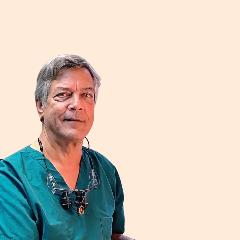Dr. Binder Volunteers to Meet Dental Needs in Haiti
 Twice over the past two years, I have spent a week volunteering in Haiti with the small nonprofit aid group, Haiti Marycare. The group’s mission is to help a few villages in the northern part of Haiti. It concentrates on providing education for children, basic infrastructure improvements and health care, especially obstetrics, gynecology and pediatrics. In cooperation with local partners, Haiti Marycare supports health clinics in two villages, staffed by Haitian doctors and nurses, most of whom were trained in Cuba, and lab technicians and administrators. These clinics are the only source of primary care for the surrounding areas.
Twice over the past two years, I have spent a week volunteering in Haiti with the small nonprofit aid group, Haiti Marycare. The group’s mission is to help a few villages in the northern part of Haiti. It concentrates on providing education for children, basic infrastructure improvements and health care, especially obstetrics, gynecology and pediatrics. In cooperation with local partners, Haiti Marycare supports health clinics in two villages, staffed by Haitian doctors and nurses, most of whom were trained in Cuba, and lab technicians and administrators. These clinics are the only source of primary care for the surrounding areas.
As far as dental care providers in Haiti, there are fewer dentists in Haiti per capita than anywhere in the Western Hemisphere. Few Haitians have ever been to a dentist or even have owned a toothbrush. Haiti Marycare has been trying for years to find a dentist to go with them. I became the first dentist to accompany the group.
Before my first trip in April 2016, I had a few months to prepare. I brought whatever supplies I would need with me. Many dental companies supported me by donating supplies such as anesthetics, disposable items, infection-control agents, and toothbrushes and toothpaste. I brought my own surgical armamentarium. We stayed in a Catholic conference center about a mile from Jacquesyl, a small fishing village. The accommodations were spartan, to say the least. Basic food was provided, but I also brought many boxes of nutrition bars to snack on and share with the local people.
During the most recent trip this past March, we went to Pilette, which is in the mountains. Both Jacquesyl and Pilette are isolated, and there is minimal transportation available. The nearest hospital is a two-hour drive away, and no one has a car. To locate these villages, you need a detailed map. The infrastructure in these villages is basic. There is no potable water, and any electrical power is solar or from a portable diesel generator. The electrical supply is spotty, and the voltage is inconsistent.
Due to the conditions during both trips, I limited my treatment to extractions. My light source was a battery-powered headlamp mounted on my surgical telescopes. There was no X-ray technology — a source of information on which I have always depended. I used a portable dental chair that was donated to Haiti Marycare, as well as an old traditional dental chair that had been donated and shipped to Haiti years ago.
In Haiti, I discovered an endless unmet need for dental treatment. Most of the patients I saw had never received dental care. Some patients had one or two decayed teeth, but most had many more. I saw teeth that were grossly carious. Many were decayed to the roots. Most of the carious teeth and residual roots had been chronically infected for years.
During my first visit, I saw about 80 patients and extracted about 300 teeth and roots. On my recent visit, I saw well over 100 patients and extracted more than 400 teeth and roots. Since my command of Haitian Creole is limited, a Haitian translator assisted me. We would seat a patient in one chair for examination and administration of local anesthesia while we were extracting teeth on the previous patient in another chair. Patients would expectorate into an empty Spackle bucket.
While I was there, I worked every day and helped a lot of people. I was surrounded by extreme poverty, and that took some getting used to; at the same time, I met some wonderful people and had unique and memorable experiences. I feel good about having the opportunity to help people in extreme need of a service that I have the ability and privilege to provide. I’m already looking forward to another visit.
Hopefully, I can motivate other dentists to volunteer. There are many groups that offer dental services to various third-world countries. Volunteering as a dentist has benefitted me greatly, and I hope that you will consider finding an aid group that can use your help.
Academy of General Dentistry emeritus member Jack Binder, DDS, MAGD, has been a member of AGD since 1976, after he graduated from New York University College of Dentistry and completing a residency at the Mount Sinai Hospital in New York City. He and his wife, Martha G. Connell, DDS, MAGD, share a practice on the Upper West Side of Manhattan. To comment on this article, email impact@agd.org.
